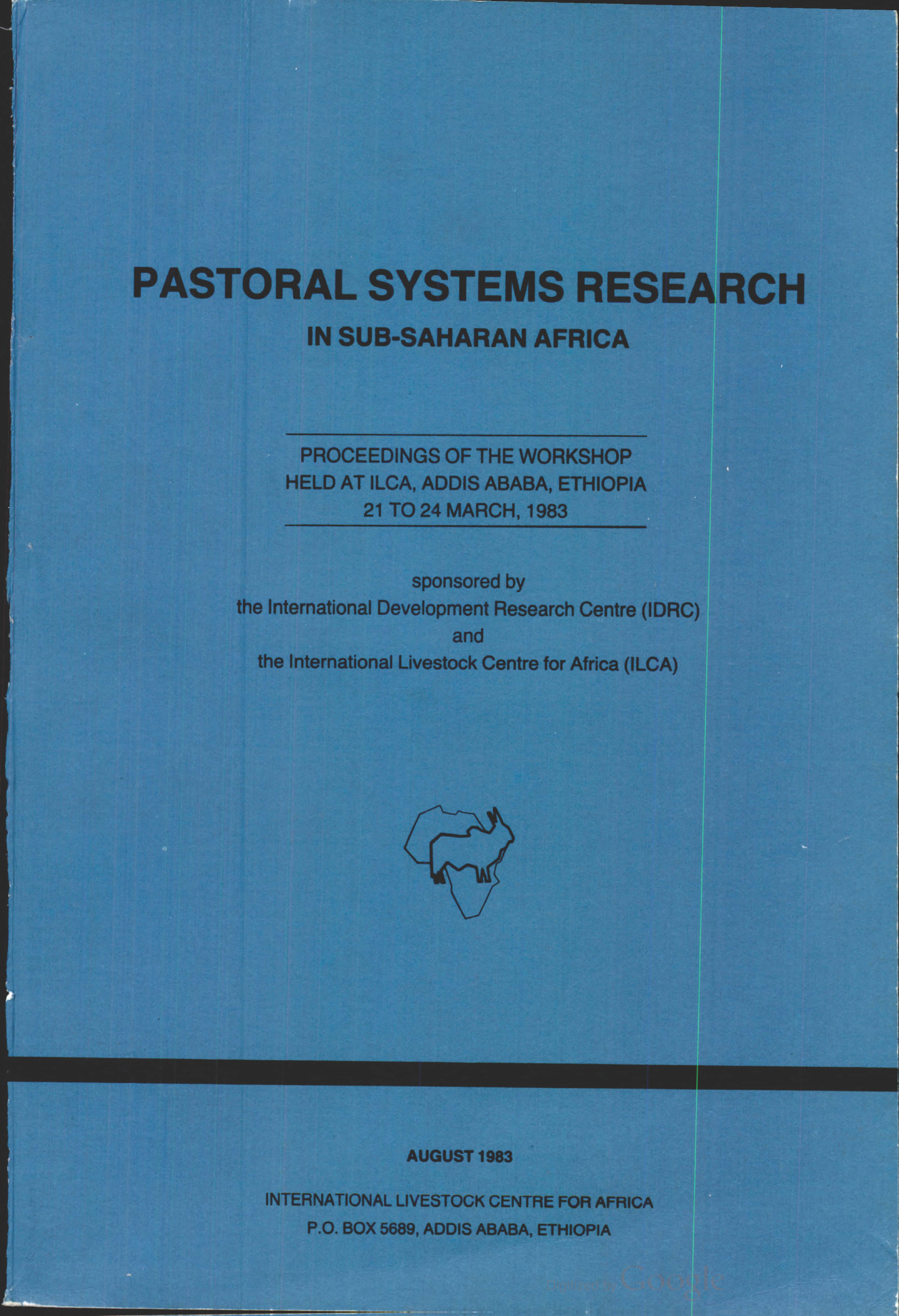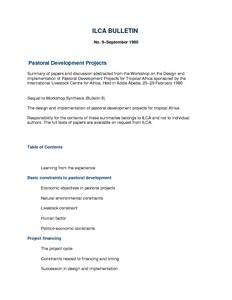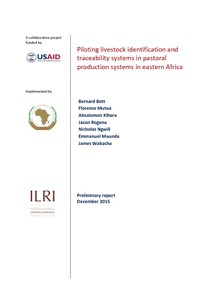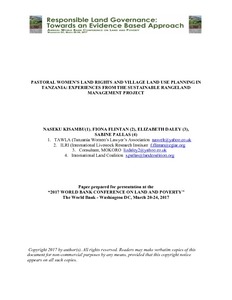Pastoral systems research in sub-Saharan Africa
Presents a collection of conference papers defining pastoral systems research; the survey and diagnostic phase of pastoral systems research; ILCA's experience in remote sensing techniques and aerial surveys; survey of vegetation resources; livestock productivity and animal nutrition; pastoral production strategies, wealth effects, household studies, and labour data collection as well as livestock marketing studies.
Pastoralists in Kenya and Sudan discover new markets for camels
Speaking in the margins of a recent conference on the future of pastoralism in Africa, Hussein Makmoud from Pwani University College in Kenya talks abut the growing trade in camels in northern Kenya and southern Sudan and how these new markets are contributing to pastoralist livelihoods in the regions. The Addis Ababa conference (21-23 March 2011) was organized by the Future Agricultures Consortium with Tufts University.
Pastoral development projects. Summary of papers and discussion
Examines basic constraints to pastoral development. Looks into project financing, design and implementation. Discusses manpower development and training procedures. Includes notes on monitoring concepts and ILCA's monitoring activities.
Pastoralism: Animal health and food safety situation analysis, Kenya and Tanzania
Pastoralism is a farming system in societies that derive majority of their food and
income from livestock production. This form of farming system is practised in the
world’s arid and semi arid lands (ASALs). It is estimated that 70% of the landmass
in the Horn of Africa is dry land; in Kenya 80% of the landmass is classified as ASAL
while approximately half of Tanzania consists of dry land. These dry lands can only
be effectively utilised when used for livestock rearing, supporting wildlife resource
harvesting and tourism.
Piloting livestock identification and traceability systems in pastoral production systems in eastern Africa
Pastoral women’s land rights and village land use planning in Tanzania: Experiences from the sustainable rangeland management project
In pastoral societies women face many challenges. Some describe these as a ‘double burden’ – that is, as pastoralists and as women. However, pastoral women may obtain a significant degree of protection from customary law even if customary institutions are male-dominated. In periods of change (economic, social, political), this protection may be lost, and without protection from statutory laws, women are in danger of “falling between two stools” (Adoko and Levine 2009).
Pastoralists preferences for cattle traits: Letting them be heard
This paper investigates preferences for cattle traits among a pastoral community in a trypanosomosis prevalent area in Kenya. Choice experiments and mixed logit models are employed to estimate economic values of preferred traits which could be introduced through systematic breeding in breed improvement programs that utilise trypanotolerance trait. The findings suggest preference for traits linked to drought tolerance, high live weight, trypanotolerance and fecundity.
Pastoral issues must be part of ILRI’s research agenda into the future
Ian Scoones, Science Adviser to ILRI reflects on the recent conference on the future of pastoralism and the work of ILRI in this area. He argues that pastoralism ‘must be part of ILRI’s research agenda into the future.” He identifies two promising areas: First, to engage in technical research on production issues in pastoral areas and pastoral systems - to sustain the enormous economic potential of such areas. Second, to support the broader area of innovation.
Pastoralism 'alive and well' in Africa
Ian Scoones from the Institute of Development Studies and the Future Agricultures Consortium reflects on some key issues emerging from a recent conference on the future of pastoralism in Africa. His overwhelming conclusion: Pastoralism is "alive and well" in some parts of the continent. But there are downsides: constraints caused by pressures on land, as well as recurring conflicts. This leads to a division between those who are "really making it" and those who are "really struggling." This poses major policy issues at the two ends of these extremes.
Pastoralists’ perception of the impact of East Coast fever on cattle production under extensive management in Northern Rift Valley, Kenya
A study using participatory epidemiology (PE) methodologies was conducted in West Pokot and Baringo districts, Northern Rift Valley, Kenya to assess the status of East Coast Fever (ECF) and obtain livestock keepers’ perceptions of how the disease impacts on their livelihoods. A total of 658 livestock keepers comprising of 480 men and 178 women were invited to participate in community meetings held in twenty two purposively selected locations each in West Pokot and Baringo.






